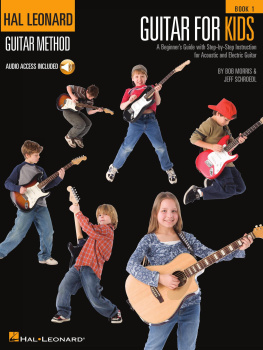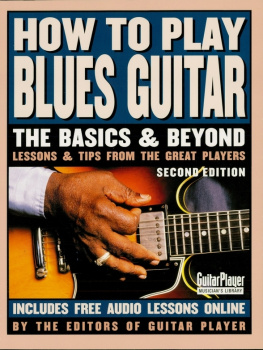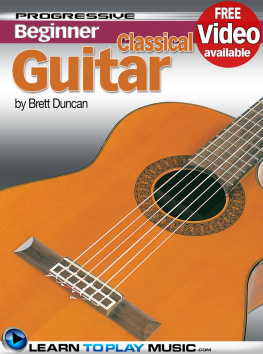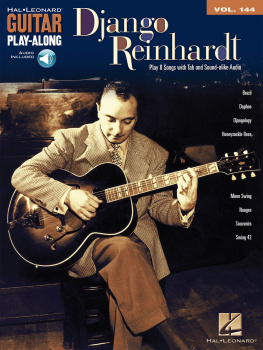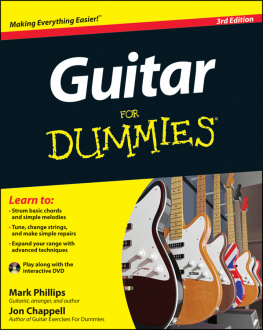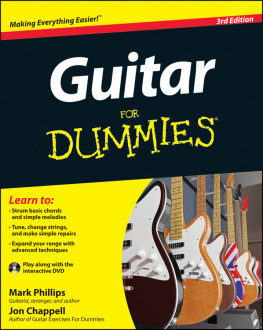Table of Contents
INTRODUCTION
Easy Way to Learn to Play the
Guitar in 20 Lessons
Basic music terms, correct guitar holding, picking
technique, scale and chord formation, solo techniques,
rhythm exercices, solo and backing exercises and all
necssary for those newly starting to play the guitar..
.
E.OZGUR AYTEKIN
PREFACE
Hello friends,
The book that you're currently holding has come to life after 25 years of my music and electric guitar background. I've worked with several music bands making diverse music genres throughout this time span of 25 years.
This book has been prepared to present the basic techniques and theoretical knowledge to you. If you're a musician candidate at the beginning level or solely aspiring to learn to play the guitar, you can easily learn the electric guitar method with 20-sectioned work pace by using this book. Along with the beginners, guitarist who may want to improve can benefit from the studies and exercises in the book.
Your level of playing guitar will advance each time you complete a section in the book. If you spread an effort to study systematically every day and try to practice the exercises accurately, the time will fairly suffice. However, pay attention to begin practicing the next section, after having studied enough to feel ready for it. You can do most of the finger exercises even while watching TV or listening to music. It's quite possible to complete the 20 sections highlighted in the book in 5 months with hard work. But you shouldn't forget to practice regularly for doing so. Don't give up repeating the exercises and studies even after going through with the sections.
Along the lesson, i made a point of adopting an approach towards playing the guitar rather than playing the guitar in a certain genre. Once you pick up the techniques that I've delivered in this book and those upcoming, you'Il be holding sway over the techniques in almost all of the music genres such as funk, blues, jazz, rock n'roll, hardrock, metal and pop. It's totally in your hands to convey the sentiment of whichever genre you like, say jazz or blues, as long as you play the scale in their format. My essential goal is to teach you how to play the guitar. Afterwards it's up to you whether you specialize in the music genre from which you take the most pleasure or utilize the techniques and information that, that specific genre requires.
Its impossible to achieve no result if you methodically study the exercises. Believe me, youll find out how simple it is to play little melodies in a very short time. Your improvisation skills will develop in time along with the theoretical knowledge of music that youll be acquiring.
Even if you dont know anything, youll have a sound grasp in playing the guitar after having done all of the sections. Later on, you can continue to use all of the techniques and studies in the book. In a sense, the exercices will aid you not only while using the book but also in the rest of your music life. Although Ive been playing the guitar for over 25 years, I still proceed on doing exercises constantly in order to warm up or to take forward the techniques. In the course of time, based on your playing style, youll automatically have your own exercise patterns in warming up, finger exercises and pace..
Even if you have just started playing the guitar or if you have a decent level, you should definitely carry around a tuner or a metronome to tune your guitar soundly. It could be difficult to play with the metronome at first but you can be quite sure that youll get used to it soon. Working with metronome will greatly facilitate and give you a feeling of rhythm and beat. Therefore, be attentive to study with the metronome.
Firstly pick a slow metronome pace while studying and then gradually pace up the speed after each of your clear and accurate playings. Your aim should be playing at the accurate metronome pace, that is to say, at the accurate tempo giving out the clearest sound. Rapid and fluid playing technique will come into being by itself alongside your studies. Practicing the exercises in both clean and distortion canals of your amp will allow you to play more clearly and properly. Even if the studies given are played in a certain position, practice them in a larger scale by using all of the positions available in your guitar. Thus, youll develop a better control over the fretboard.
Youll find the media in the last part of the book where you can have access to the recordings of the solo studies that you can work on with the backing track Ive prepared for you. The exercices which have sound samples are indicated with this symbol in the book. You can acquire all the information needed to have access to the sound files of the lessons in mp3 format by contacting me via my email address. You need to send me the code made up by the letters and numbers in the book to have access to the sound files. I recommend you to listen to the recordings in those sound files while studying.
Ill continue to share all the knowledge that Ill be adding step by step in my further studies and upcoming books. Dont forget that you have to study all of the exercises with great patience and in proper order. If youre new to playing the guitar, you can face difficulties in the beginning. However if you dont give up and carry on with patiently and regularly studying, the exercices that you firstly had struggles with will seem easier. Those exercises will be replaced by other ones but if you sit tight and proceed, youll come to realize that you have rather well improved. Dont refrain from practicing repetitive exercises. If you want to become a decent guitarist you have to revise them, since this is a long-termed adventure that will last for all of your life.
You can consult me for any information via my email address or through my website. I wish you all good luck in your further studies.
Contact information
Sound File Access Code : EN3CKEM4
SECTION 1
Lets Get To Know The Guitar
Guitar is both a solo and an accompanied instrument. Electric guitar is formed by 2 main parts: body and neck. In the neck part; there are fretboard, fret markers placed on the fretboard and tuners which enable us to wind the strings and to tune the guitar. Body however consists of magnetic volume and pots where the electronic components are placed and the bridge system.
Lets briefly learn the components of the guitar and their features.
Headstock: The part where the neck and the tuners are set.
Tuning Machine: The tuners that are placed in the neck part to tune the guitar.
Locking Nut: Generally found in Floyd Rose(the term will be explained later on) guitars. The strings are locked with the locking nut after having tuned the guitar with the tuners placed in the neck part, thus the lose in tune is prevented.
Fretboard: Its a piece where mainly the frets are placed. It could be formed by 21, 22, 24 frets. Its generally made out of maple tree, rosewood, ebony tree or mahogany tree.
Body: All the electronic components are set in this part of the guitar. Its normally used basswood, cornel wood, ash tree, mahogany tree, walnut tree or maple tree to make this part.
Inlay: Generally the symbols that resemble notes which are placed on the 3rd, 5th, 7th, 9th, 12th, 15th, 17th, 19th, 21st and 24th frets in acoustic and electric guitar. Therere many of those with different designs and patterns. Its defined as fret position mark.
Fret: The space between the fret markers are named fret. The one thats closest to the neck is called the first fret.
Fret Markers: The bars that are placed on the fretboard. They get worn away based on the span of time spent playing the guitar. They get levelling or wholly replaced by the person whos engaged in creating and repairing musical instruments.


